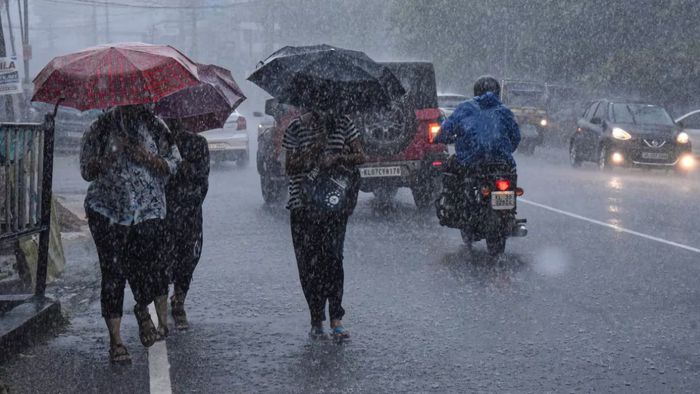India witnesses driest August since 1901, IMD predicts heavy rainfall in Northeast
India has witnessed the driest weather conditions since 1901 in August this year, a senior meteorologist said, adding it was a clear result of the intensifying El Nino conditions.

- Aug 31, 2023,
- Updated Aug 31, 2023, 8:33 AM IST
India has witnessed the driest weather conditions since 1901 in August this year, a senior meteorologist said, adding it was a clear result of the intensifying El Nino conditions.
Also, the monsoon this year may end up being the driest since 2015 when India recorded a rainfall deficit of 13 per cent.
On the otherhand, the IMD has predicted rainfall to continue over Andaman-Nicobar Islands, Northeast India and extreme south Peninsular India during the next five days.
"From Thursday to Saturday, similar weather conditions are expected over Assam and Meghalaya. Additionally, Nagaland, Manipur, Mizoram, and Tripura are likely to experience this pattern of rainfall and thunderstorms over the next five days," said the weather forecast agency in its bulletin. "Similarly, Kerala can anticipate this weather pattern from Tuesday to Wednesday," it said.
Also Read: Assam: Massive landslide blocks Silchar-Haflong highway, traffic movement disrupted
In South India, there's a projection of light to moderate scattered rainfall, with isolated instances of heavy rainfall expected over Tamil Nadu, Puducherry, and Karaikal from Tuesday to Friday, IMD further said.
It is to be mentioned here that meteorological experts from India are set to unveil their forecast for September on August 31.
With a 32 per cent precipitation deficit in August, so far and only subdued rainfall activity predicted over a large part of the country in the next three days, India is on track to have the driest August since 1901, according to an India Meteorological Department (IMD) official who requested anonymity. In a typical year, August receives 254.9 mm of rainfall, accounting for almost 30% of total monsoon precipitation.
According to IMD statistics, India had a 25% rainfall deficit in August 2005, 24.6 per cent in 1965, 24.4 per cent in 1920, 24.1 per cent in 2009, and 24 per cent in 1913. The primary cause of below-normal rainfall in August, according to IMD chief Mrutyunjay Mohapatra, was El Nio, the warming of waters in the Pacific Ocean near South America, and an "unfavourable phase of the Madden Julian Oscillation (MJO), which is known to reduce convection in the Bay of Bengal and the Arabian Sea."
El Nio is commonly connected with weakened monsoon winds and dry weather in India, whereas MJO is a large-scale intra-seasonal atmospheric disturbance that originates in tropical Africa and moves eastward. It's like a pulse or wave that lasts 30 to 60 days.
The environment becomes more conducive to rainfall during the active period of MJO.
As a result of increasing cloud cover, stronger winds, and increased convective activity, the Indian subcontinent receives more rainfall.
"The favourable phase of MJO results in rainfall even if there is no low-pressure system. July recorded above-normal rainfall due to the favourable phase of MJO," Mohapatra said.
However, only two low-pressure systems developed over the Bay of Bengal against a normal of five under the impact of prevailing El Niño conditions, he said.
"Another reason for below-normal rainfall in August was a lower number of low-pressure systems in the South China Sea and they, too, moved northward," he added.
Low-pressure systems that form over the South China Sea usually migrate westward, eventually reaching the northern Bay of Bengal after passing through Vietnam and Thailand.
The picture for September is not very grim due to the favourable Indian Ocean Dipole (IOD), according to Madhavan Rajeevan, former secretary at the Ministry of Earth Sciences.
"September is not expected to be as bad as August, though models suggest rainfall will be on the lower side of normal," he said. The senior meteorologist also said El Niño is the primary reason for the high rainfall deficit in August. "The absence of a positive phase of MJO must have also played a marginal role," he added.
The IMD stated during a press conference on August 1 that El Nio and other adverse circumstances may restrict rain in August, however cumulative precipitation in the second part of the monsoon (August-September) is predicted to be normal.
"Rainfall in September is likely to be on the lower side (94 to 99 per cent) of normal (422.8 mm)," Mohapatra said.
Rainfall between 94% to 106% of the long-period average